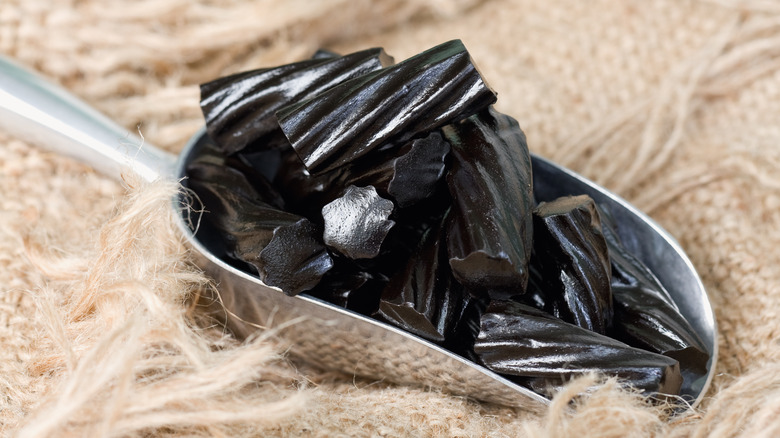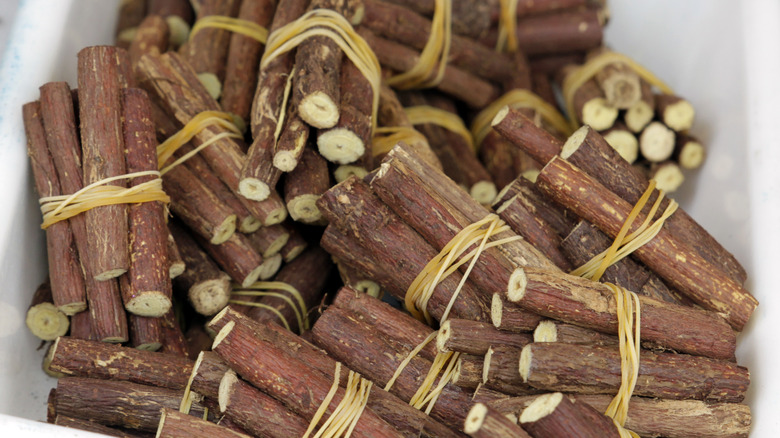What Flavor Is Black Licorice?
Black licorice is perhaps the most notoriously disliked candy there is. It's many peoples' least favorite option and, in some cases, their least favorite food in general. And yet, you'll still find those rare few that love the taste. But what is it about black licorice that's so polarizing? And what is its actual flavor, anyway?
The taste of black licorice is similar to anise or fennel, but it originally comes from the licorice plant, also called glycyrrhiza glabra. This plant produces a compound called glycyrrhizin, which is what traditionally sweetened the candy. You may not think of black licorice as an overly saccharine treat, but glycyrrhizin is actually 40 times sweeter than sugar (and you should be careful not to each too much of it). Overall, the candy's flavor is primarily sweet with a little spice and bitterness, but it's also quite pungent, which is what makes black licorice such an acquired taste. But it's not just the flavor that makes for an easy comparison between this candy, anise, and fennel: They all contain another compound called anethole, which gives them a similar aroma.
How the flavor of licorice has evolved over time
While black licorice today is enjoyed (or detested) as a candy, the plant it comes from was originally used for medicinal purposes. And once it became known as a sweetener, it was deployed in boozy beverages and baked goods. But in the 18th century, the candy took off, and the first factory emerged in Calabria, a region in southern Italy.
While the flavor of black licorice hasn't changed much from when it was first created to today, its ingredients have. You won't often see it made in the U.S. with the traditional sweetener, glycyrrhizin. Instead, similarly flavored oils like anise are more likely to be used. In this sense, the flavor of black licorice is literally anise. However, some (like Trader Joe's Soft Black Licorice Twists) use a combination of glycyrrhizin and aniseed oil. And while molasses used to be the main secondary sweetener in this candy, today, you'll also find ingredients that are more common in the U.S., like sugar or corn syrup.
So if black licorice is traditionally made with the licorice root, why is it that the red version has such a different taste? Red licorice typically doesn't contain any licorice at all; instead, it's a candy made with fruity flavors and red food coloring. Red Vines' Original Red Twists, for example, feature corn syrup, citric acid, and artificial flavor — but none of the sweet, bitter root that the treat originally came from.

